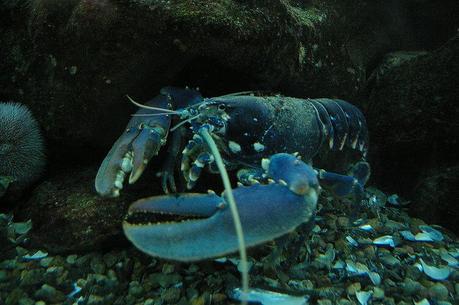
Not just an insight into my most random of thoughts, but an extremely important question for the biological community. In general we accept that aging is an inevitable consequence of life, but sadly the declining mental and physical health that can often be attached leads scientists to ask not only why we age, but what we can do to reduce its effects.
So where do lobsters fit into the equation? Well it seems that conventionally at least, lobsters don’t age. Of course they acquire years and grow with time, but significantly they do not appear to experience detriment. They don’t weaken or loose fertility, they don’t become more susceptible to disease; in fact cause of death is most commonly physical trauma as opposed to any internal failures. As with many questions in biology, the answers explaining this capability are thought to lie within DNA.
The science of aging is known as senescence. Within our bodies cells replicate and divide to replace those that are wearing out, however these divisions are limited and for humans, after around 50 divisions from its first generation a cell will die. Over time this leads to the degeneration we associate with aging. Although there are many alternative theories for why this happens, there is significant grounding in an explanation known as the telomere theory.
Telomeres are protective caps at the end of chromosomes containing non-essential repeats from the DNA sequence. When DNA undergoes replication the process initiates at the center of the chain, consequently as the double helix forms the very end regions of the chromosomes (the telomeres) remain un-replicated and a small portion is lost in the process. This continues each generation until the telomeres have depleted and a cell can no longer afford to divide.
There are however ‘immortal’ human cells, cells that can up-regulate their telomeres by releasing an enzyme known as telomerase. These are commonly referred to as cancer cells. Understanding the role of telomerase in the vigilance of cancer could lead to the advance of better treatments, and this enzyme is also present in our long lived anti-ageing lobsters.
Telomerase clearly has positive effects for the lobster however it is unlikely that they are immortal meaning that telomerase is likely inhibited at some point. There are other exceptionally long lived animals like giant tortoises and sea anemones, the difference being that as yet there is no definite ‘old age’ for a lobster. Like most arthropods they moult in order to grow, shedding their exoskeleton and growing a new one. This means that size tends to correlate with age, and much to the joy of science fiction the potential of either of those factors is as yet unknown. The possibility of discovering a gigantic lobster trawling the oceans depths old enough to remember Napoleon is still plausible…
80% of cancers appear to manipulate telomerase meaning it is an attractive target for breakthrough research. Recently samples from long lived animals have helped understand the enzyme on a sub-microscopic level and this will be crucial for drug production in the future. It is by no means a wonder conclusion for cancer research, however it is sure to yield some significant advancements.
The potential influence of telomerase extends to Alzheimer’s, organ failure, bone diseases and other age related conditions. It is another cruel irony of nature that a substance responsible for lengthening life in some organisms can prematurely terminate life in others. However it could equally be considered an exemplary representation of the potential rooted in a harmonious relationship with our natural world.
